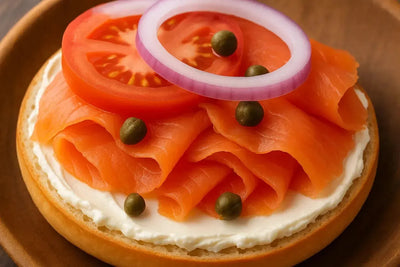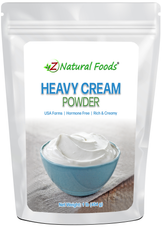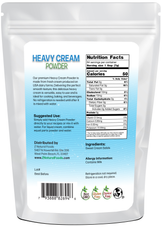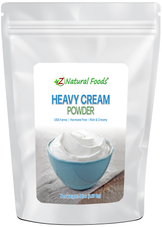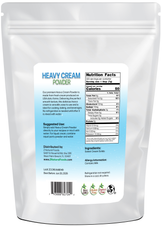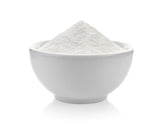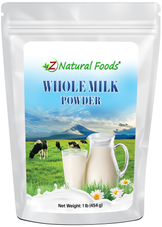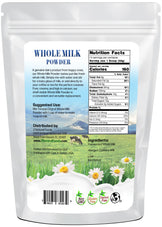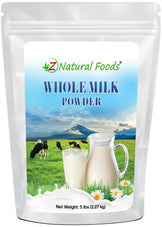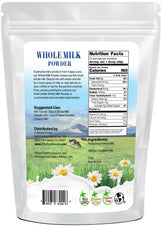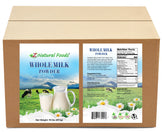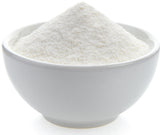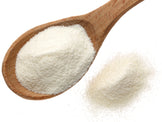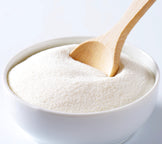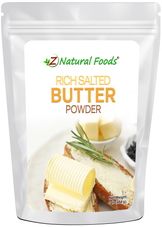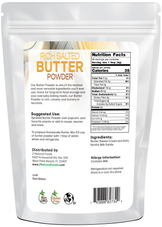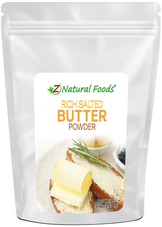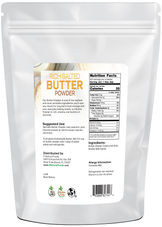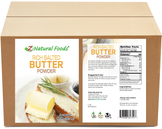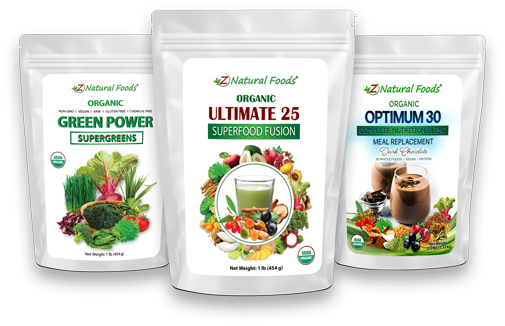Description
Description
Difference between heavy cream and heavy cream powder, part 2
Z Natural Foods is committed to offering customers a diverse range of high-quality foods in their most versatile forms.
Our heavy cream powder, a prime example of this commitment, is of the highest quality.
Today, we will delve into the world of heavy cream and more key differences between fresh heavy cream and heavy cream powder.
If you have not read part one of this series, please go here:
Heavy cream powder vs. heavy cream (The difference)
Our aim is to equip you with all the necessary information to make informed decisions about whether our heavy cream powder is the right choice for you.
The ‘Ins and Outs’ of Heavy Cream
Perhaps one of the most versatile ingredients in the culinary world, cream, in its various forms, has almost limitless potential uses.
However, to really understand this magnificent ingredient, it is vital to distinguish between the various forms. Cream is the thick part of the milk that separates and rises to the top due to its fat content. You may have heard of heavy cream, half and half, and light whipping cream.
In simple terms, the primary factor determining the difference between these various forms of cream is the fat content.
-
Heavy cream must contain a minimum of 36% milk fat; the highest you can purchase fresh is 40%. However, butter (also known as clotted cream) contains 70% milk fat.
-
Light whipping cream contains less than 30% milk fat.
-
Half and half (A blend of equal parts of milk and cream) contains between 10-18% milk fat.
However, from a culinary perspective, the primary reason for using these various types of creams is to add more body, texture, and richness to culinary creations. Their specific uses and applications are also based on fat content.
For example, you can use any of the above creams to make a richer and creamier sauce or soup. However, if your goal is to make whipped cream, using half-and-half will prove to be a waste of your time.
Light whipping cream will create a delightful, melt-in-your-mouth product that, unfortunately, will not hold its shape for very long. Only heavy cream will do when creating the most creamy, dense whipped cream that holds its shape. Ultimately, you base your choice on how rich and thick you want your end product to be.
Next, let’s look at how heavy cream powder is made.
It is vital to understand one of the most important processes that ultimately determines the quality of powdered food: the drying process.
It is no secret that air and moisture are powdered food’s greatest enemies.
Thanks to our meticulous food preservation techniques, we can create a powdered food product without adding preservatives and chemicals, creating a more versatile end product that is as highly nutrient-dense as the fresh version. You can trust that our heavy cream powder is of the highest quality, preserving the natural richness of fresh heavy cream.
However, it is essential to note two critical points;
1) The quality of the raw materials used to produce heavy cream powder is paramount. It predominantly determines the final product, ensuring the powder retains the fresh heavy cream's natural richness and flavor profile.
This emphasis on quality should reassure our customers of the high standards we maintain in our production process.
2) Not every food responds the same to these different methods. Therefore, using the correct method for each food is vital to get the best result. For example, berries respond very well to freeze-drying. In contrast, carrots and apples do best when air-dried, and heavy cream powders respond well to spray-drying.
Ultimately, spray-drying is the best method for creating the creamiest, richest, and most versatile heavy cream powder. This method is a testament to efficiency and practicality.
Our spray-dried heavy cream powder averages less than 5% moisture and 72% fat content, which allows for more accessible storage options and blending capability and supports fresh cream's natural flavor profile.
-
Heavy cream powder is created by taking pasteurized milk and putting it into a machine that, at high speed, separates the cream from the milk.
-
Then, the moisture is removed, leaving only the cream solids, using a process known as spray-drying.
-
This process turns the heavy cream solids into a fine powder while preserving their nutritional value and rich flavor.
-
While fresh dairy products have a short shelf-life and require refrigeration, powdered functional superfoods like heavy cream powder are versatile and have unique advantages over their fresh counterparts.
That said, is heavy cream powder a better overall choice than fresh heavy cream?
While it is always better to consume dairy products in their wholesome fresh form, the idea that we can’t replace fresh food with a powder to nourish our body is simply untrue.
However, fresh foods (especially dairy) have a short shelf life, and their need to be refrigerated creates barriers for unlimited versatility. As we have mentioned in many of our previous articles and product descriptions, powdered functional superfoods are tremendously versatile, unlimitedly able to create new and exciting products, and have unique advantages over the fresh versions of those foods. There are many significant advantages to using powders, especially heavy cream.
Limitless application and versatility of heavy cream powder
From camping to emergency food storage, creating healthier versions of comfort food favorites, and recreating palate-pleasing textures and flavor profiles, the limits of heavy cream powder are only based on your lack of creativity. One of the joys of camping is catching and grilling your food on an open fire. But who doesn’t love comfort foods like mac-and-cheese or a hearty soup?
With versatile powders like our heavy cream powder, you have endless options. Creating warming, creamy, delicious dishes or turning a simple soup into a rich, filling meal outdoors is a breeze.
Many conventional non-dairy coffee creamer products contain unnecessary additives, preservatives, and flavoring agents intended to create a pleasant-tasting product. The issue is that they provide no nourishment or benefit when consumed and can potentially cause harm. Some common ingredients are hydrogenated soybean oil (AKA trans fats), artificial sweeteners, corn syrup solids, and sodium casein, which is derived from dairy but considered acceptable because it is lactose-free.
None of those ingredients provide any nourishing properties. This is why reading the ingredients list is so essential. We have also learned that it is not about the small amount used daily but the accumulation of using them over a long period that creates the potential for health risks.
People also look at the label and think they are low in calories but don’t pay attention to the serving size. The average person uses 3 to 4 times the serving size, which adds up over time.
Therefore, as much as you love a freshly brewed cup of black coffee, you know deep down inside that it might just not be enough. You seek nourishment to help you reach the next level without the crash, and coffee is an excellent delivery system.
Our simple heavy cream powder can be used as a stand-alone product or as a base to make your coffee creamer blend, transforming an average cup of coffee into something extraordinary.
Finally, here are some of the benefits of heavy cream
As more food science emerges, we understand the wide range of components contained in heavy cream, like fat-soluble vitamins and essential fatty acids; therefore, how these fats in milk function in the body takes on a new meaning. According to a review titled Composition, structure, and absorption of milk lipids: a source of energy, fat-soluble nutrients, and bioactive molecules, “Milkfat is not only a source of bioactive lipid components, it also serves as an important delivery medium for nutrients, including the fat-soluble vitamins (A, D, E, and K). Bioactive lipids in milk include triacylglycerides, diacylglycerides, saturated and polyunsaturated fatty acids, and phospholipids.”
“Among the 12 major milk fatty acids, only three (lauric, myristic, and palmitic) have been associated with raising total cholesterol levels in plasma, but their individual effects are variable-both towards raising low-density lipoproteins and raising the level of beneficial high-density lipoproteins. The cholesterol-modifying response of individuals to consuming saturated fats is also variable.” Therefore, milkfat's composition, functions, and biological properties will need to be re-evaluated as the food marketplace moves increasingly towards more personalized diets.”
The breakdown of fatty acids in whole milk:
-
62% Saturated
-
30% Monounsaturated
-
4% Polyunsaturated
-
4% Transfats
Heavy cream was determined to contain 91.62% saturated fatty acids and 7.59% unsaturated fatty acids, with short and medium-chained fatty acids C4:0-C18 (but mainly the medium-chained fatty acid C12:0 Lauric acid at 34.44%).
Naturally occurring trans fatty acids include vaccenic acid, the main TFA in dairy, and rumenic acid, the biologically active form of CLA (conjugated linoleic acid). In simple terms, ruminant trans fatty acids (R-TFA) from whole milk offer natural qualities that dangerous and unnourishing partially hydrogenated industrial fats don’t come close to competing with. One of the natural components of R-TFAs is conjugated linoleic acid (CLA), which is associated with preventing allergies and asthma. Heavy cream (36% fat) has around 118mg of CLA per tbsp.
In conclusion, we believe that functional food powders can be very useful tools with unlimited applications to support functional health and culinary creativity when made and used correctly.
Ultimately, heavy cream powder is a tremendous tool with proven capabilities to support those end results. I hope we have clarified what makes heavy cream powder as equally functional as fresh heavy cream.
For more information about our Heavy Cream Powder, go here:
About Michael Stuchiner, Master Herbalist
Michael Stuchiner is a Master Herbalist and proud graduate of The School of Natural Healing and has worked in different areas of this field for over 25 years. He is a retired elite-level powerlifter who competed for 27 years. As an avid international traveler, he is passionate about the use of medicinal and tonic herbs, as well as foods traditionally found in local markets in the 35 countries he has visited. Michael brings you his years of experience as a Master Herbalist, traveler, and athlete through the hundreds of articles he has written and his YouTube channel (A Master Herbalist Perspective). He is considered a true educator in this field. For more articles written by Mike, go here: Master Herbalist.

